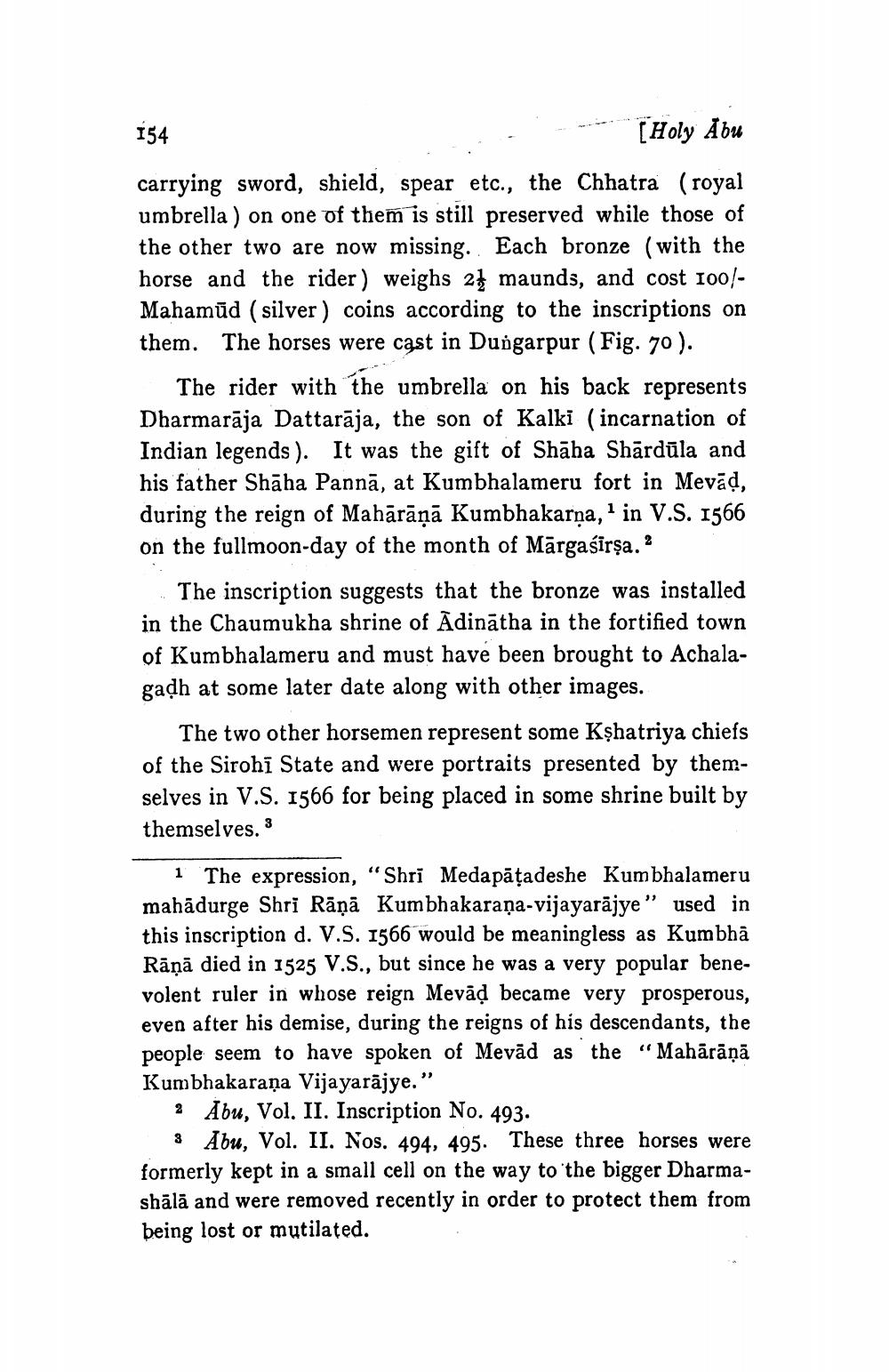________________
154
(Holy Abu
carrying sword, shield, spear etc., the Chhatra (royal umbrella ) on one of them is still preserved while those of the other two are now missing. Each bronze (with the horse and the rider) weighs 21 maunds, and cost 100Mahamūd (silver) coins according to the inscriptions on them. The horses were cast in Duigarpur (Fig. 70 ).
The rider with the umbrella on his back represents Dharmarāja Dattarāja, the son of Kalki (incarnation of Indian legends). It was the gift of Shāha Shārdūla and his father Shāha Pannā, at Kumbhalameru fort in Mevād, during the reign of Mahārāṇā Kumbhakarņa,' in V.S. 1566 on the fullmoon-day of the month of Mārgasīrşa. 2
The inscription suggests that the bronze was installed in the Chaumukha shrine of Ādinātha in the fortified town of Kumbhalameru and must have been brought to Achalagaļh at some later date along with other images.
The two other horsemen represent some Kshatriya chiefs of the Sirohi State and were portraits presented by themselves in V.S. 1566 for being placed in some shrine built by themselves. 3
1 The expression, “Shri Medapātadeshe Kumbhalameru mahādurge Shri Rāṇā Kumbhakarana-vijayarājye" used in this inscription d. V.S. 1566 would be meaningless as Kumbhā Rāņā died in 1525 V.S., but since he was a very popular benevolent ruler in whose reign Mevād became very prosperous, even after his demise, during the reigns of his descendants, the people seem to have spoken of Mevād as the “Mahārāņā Kumbhakaraņa Vijayarājye.”
2 Åbu, Vol. II. Inscription No. 493.
3 Abu, Vol. II. Nos. 494, 495. These three horses were formerly kept in a small cell on the way to the bigger Dharmashālā and were removed recently in order to protect them from being lost or mutilated.




